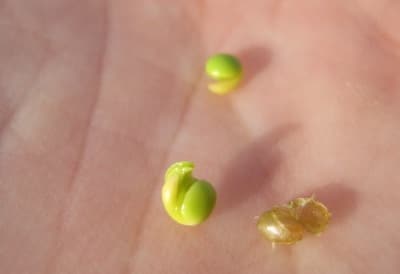After a drought-stressed summer in many areas of the Prairies, canola plants may have a lingering hormone response that can cause seed sprouting in the pods and regrowth of cut plants.
Sprouting: There is not much growers can do to avoid this, and combining early is not an option — given the storage risk. In grading, sprouted seed is categorized as “damaged” seed. No.1 canola can have a maximum 5% damaged seed. No.2 can have up to 12% damaged seed. No.3 can have up to 25% damaged.
The Canadian Grain Commission’s Official Grain Grading Guide, which you can read online, defines sprouted canola as those seeds having a ruptured seed coat in combination with either a rootlet that protrudes beyond the normal contour of the seed or distinct swelling of the seed. Seeds having a ruptured seed coat that are otherwise sound are only considered sprouted when found in combination with seeds meeting the definition of sprouted.
Regrowth: This is not usually a huge concern. However, canola regrowing under a windrow can get tangled in the swath and pulled into the combine. These high-green plants can reduce separator performance and increase wet green dockage in the sample, which increases the storage risk. Canola plants that regrow through the fall will (usually) die in the winter, but these big dead plants could reduce drill performance in the spring.
Some regrowth has been odd looking. If most of them have this odd growth characteristic, it could be the result of stress hormone still in the plant. If just a few are odd looking while others are normal, it could be the result of late aster yellows, for example. Either way, no management is required or recommended.
Further reading:
